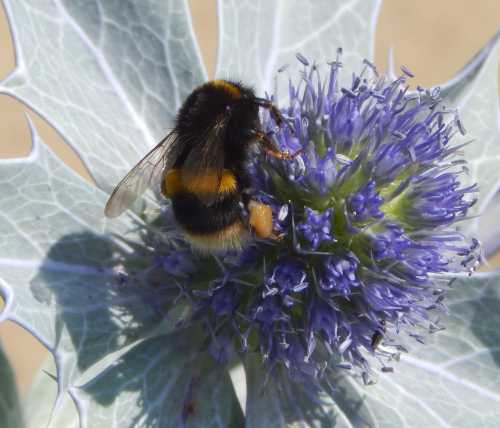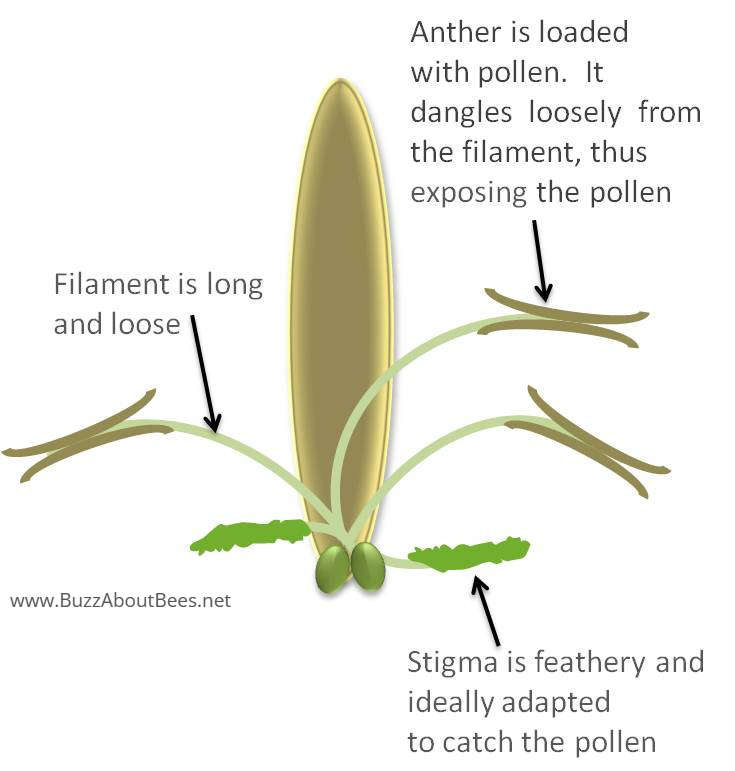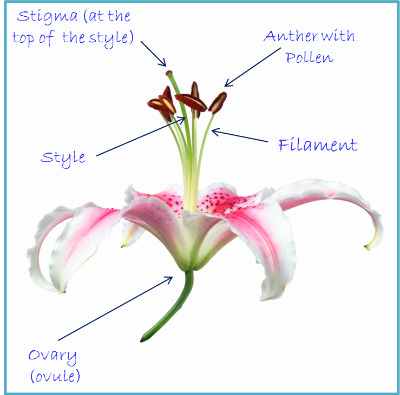What Is Pollen?
At its most basic, pollen carries cells which enable fertilization of plants, thus enabling the plant to reproduce.
A more detailed definition of pollen:
pollen is a substance produced by the anthers of seed-bearing plants, consisting of numerous fine pollen grains containing male gametes - i.e. germ cells that fuse with other cells during fertilization, which occurs during the plant pollination process.
(See below for further links to information about pollination specifically).
Types of Pollen – Pollen Classification
Broadly, there are two types of pollen:
- entomophilous and
- anemophilous pollen.
1. Entomophilous Pollen
This type of pollen is collected by insects during insect pollination.
Plants are often said to have developed pollination syndromes, which describes the ways in which plants have adapted so that they attract their ideal pollinators in order to maximise the chances that fertilization will take place.
Pollination syndromes range from particular flower fragrances (from fresh delicate florals to the stench of rotting flesh!) to nectar provision and flower colours and shapes.
Pollen collected by insects is said to be of high nutritional value, providing much needed protein for those insects, and hence its appeal to insects as a food source.
2. Anemophilous Pollen
This is the pollen most often associated with pollen allergies. It is carried
by wind rather than by insects. Crops which are wind pollinated
include the grasses and cereals – and whilst they form a major proportion of the
human diet, arguably they form the least interesting, least diverse and
possibly least nutritious element, although not without benefit.
Anemophilous pollen is said to be of lower
nutritional value than entomophilous pollen. It is interesting that some propose that
taking bee pollen supplements can increase immunity to pollen allergies,
although I have not seen any scientific data to support this claim (if you are
aware of any, please let me know via the ‘contact me’ page).
Why Do Bees
Need Pollen?
 Bumble bee foraging on sea holly with pollen-laden pollen baskets (corbiculae) on the hind legs.
Bumble bee foraging on sea holly with pollen-laden pollen baskets (corbiculae) on the hind legs.
Pollen is tremendously important for bees (and other insects). It is a vital source of protein in the diet
of adult bees, but it is also important as a feed for young, developing bees.
You can read more about this subject here: Why do bees need nectar and pollen?
You can also read about how bees collect pollen.
What Else Is Pollen Used For? - Use By Humans
1. Culinary use of pollen
Pollen
is sometimes collected from flowers for culinary use. In Italy, fennel pollen is sometimes used for
flavouring pesto, for example.
2. Use of floral pollens in scientific investigations
Scientists and researchers have identified a number of uses for pollen in their investigations. Pollen has unique structures depending on the plant species. It is these kinds of differences that enable forensic scientists to trace evidence to specific vegetation (field, hedgerow, woodland, for example, and type of plant life within it), and hence particular locations and regions.
This means, for example, if pollen grains are collected from any objects linked with a crime, scientists will be able to use those pollen grains to help confirm details about that crime, such as the location.
The study of fossilized pollen grains is also useful to archaeologists, enabling them to build a picture of the types of vegetation historically found in a given area.
The pollen content of honey can also help identify or confirm the floral nectar source (i.e. the flowers from where the honey bees gathered nectar to make the honey). This could be useful to authenticate premium honeys.
3. Health benefits of bee pollen?
Bee
pollen specifically is also claimed to have various health benefits, although I must admit I am personally not convinced by the
claims about the benefits to human health. My personal view is that the nutritional content of bee pollen can be gained more cheaply and in greater quantities from alternative foods, especially fruit and vegetables.
I have read a book about this, and researched the claims made, but I am genuinely open to other ideas if scientifically backed.




